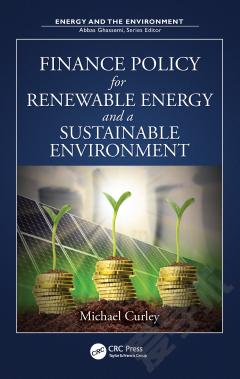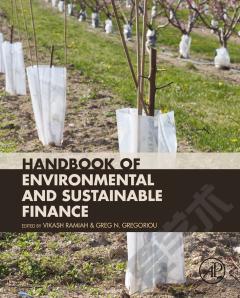Finance Policy for Renewable Energy and a Sustainable Environment
Paying for the Fix What Is Environmental Finance? The Second Wave The 23 Principles of Environmental Finance The 23 Principles of Environmental Finance The 2 Core Principles of Environmental Finance Policy Principles of Environmental Finance Management Principles of Environmental Finance Revenue Raising Principles for Environmental Finance Sources of Revenue for Environmental Finance Programs Financial Principles of Environmental Finance Financial Mechanics Types of Debt The Irregular Payment Method Balloon Payment Loans Level Payment Method Level Principal Payment Method Cash Available for Debt Service (CADS) Coverage Comparing Financing Alternatives Comparing Loans Hidden and Not-So-Hidden Cost Factors Financing Costs Impact of Term on Annual Debt Service Payment Level Principal Payment Loans Level Payment Method Grants and Affordability Grants Affordability The Role of Equity The Curse of Subsidies The Need for Subsidies Delivering the Subsidy Affordability Measures Designing Better Subsidies Subsidies: Some Real, Some Imagined Leverage: The Power of Guaranties Major Techniques for Financing Projects Rules of the Game Cost/Benefit Analyses The Benefit Matrix The Cost Matrix Case Study: Republic of Georgia Water Project Credit Enhancement Tranching Self-Funded Reserves Second Loss Reserve A Role for the International Development Banks Tax Revenue Intercepts Externally Funded Guaranties Legal Guaranties Financial Guaranty Insurance Tariffs Characteristics of Good Tariffs Full Cost Recovery Tariffs Tariff Design Options Regulation of Water Tariffs Climate Change and Renewable Energy The Beginnings Finance Policy for Climate Change and Renewable Energy Cap-and-Trade Programs Driving Down Costs Reduce System Costs Volumetric Tariffs Raise Money/Change Behavior Service Lives Longest Terms Lowest Rates Credit Enhancement Guaranties Buy-Downs Subsidies Carrots and Sticks Cost/Benefit Appendix: Countries with Non-Investment-Grade Ratings on Their Sovereign Debt
{{comment.content}}








 京公网安备 11010802027623号
京公网安备 11010802027623号